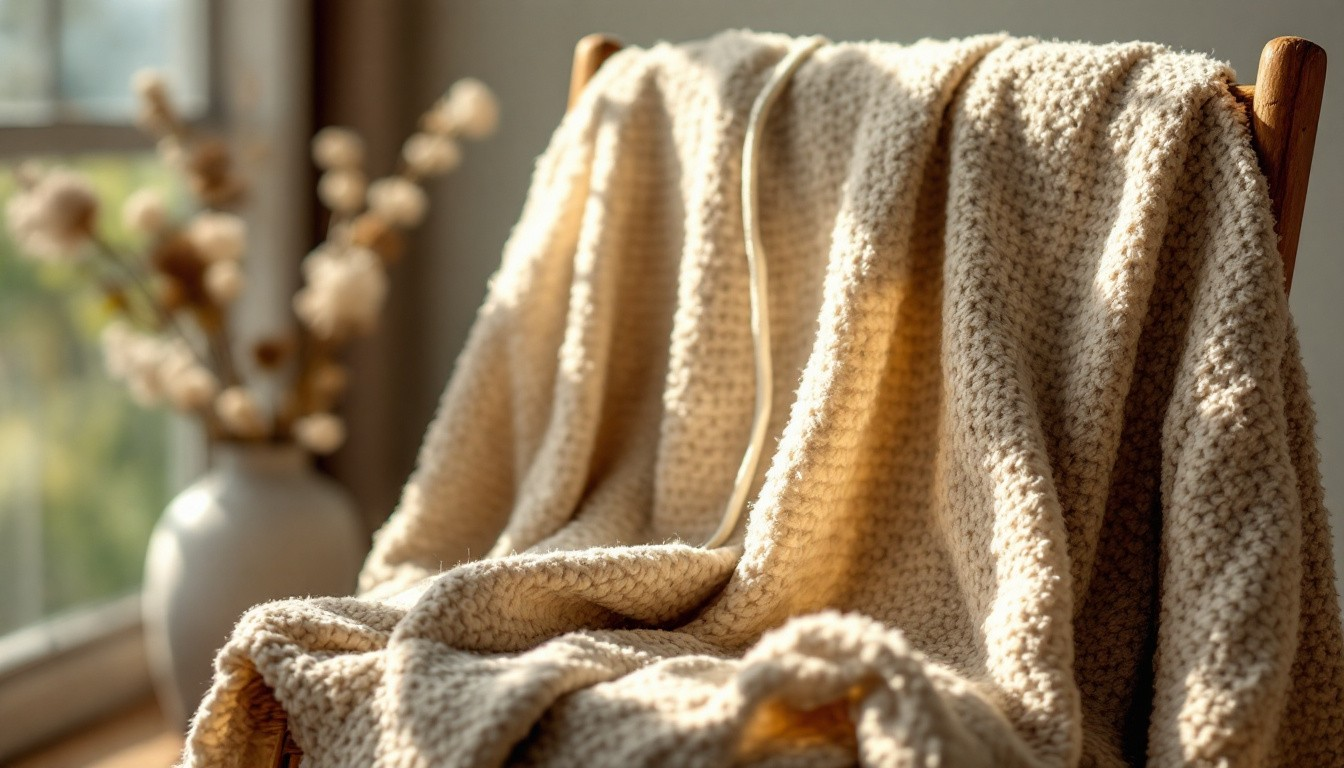When considering What Is the Softest Material for Hoodies? It’s important to evaluate various fabric options based on their properties. Cotton, fleece, and blends like modal or bamboo each offer different levels of softness, breathability, and durability. Factors such as warmth and moisture-wicking capabilities also come into play. As you explore these materials, you might find that your preference aligns with specific qualities that enhance your overall comfort and style. What might surprise you is the impact of fabric blends on performance.
Key Takeaways
- Cotton is a classic choice for hoodies, offering softness and breathability for comfort across various climates.
- Bamboo fabric provides a luxurious, silky smooth feel and is an eco-friendly option for soft hoodies.
- French Terry combines cotton and polyester, delivering a lightweight yet soft material perfect for layering without bulk.
- Fleece offers ultimate warmth and softness, making it ideal for cozy hoodies in colder conditions.
- Modal is a semi-synthetic fiber that enhances softness and breathability, making it a comfortable choice for hoodies.
What Is the Softest Material for Hoodies?
When it comes to the softest material for hoodies, it really depends on the blend — but here are the top contenders known for their ultra-soft feel:
1. Cotton: The Classic Choice
When you think of hoodies, cotton often comes to mind as the classic choice due to its softness and breathability. Cotton’s natural fibers create a fabric that feels gentle against your skin while allowing air to circulate, making it an ideal option for various climates. The inherent cotton breathability guarantees you stay comfortable, whether you’re lounging at home or out and about.
Additionally, cotton’s durability means that your hoodie can withstand regular wear and washing without losing its shape or soft texture. Unlike synthetic materials, cotton doesn’t trap moisture, which helps prevent odors and keeps you feeling fresh. As a result, when you seek a reliable, soft, and breathable hoodie, cotton remains the go-to fabric for both comfort and longevity.
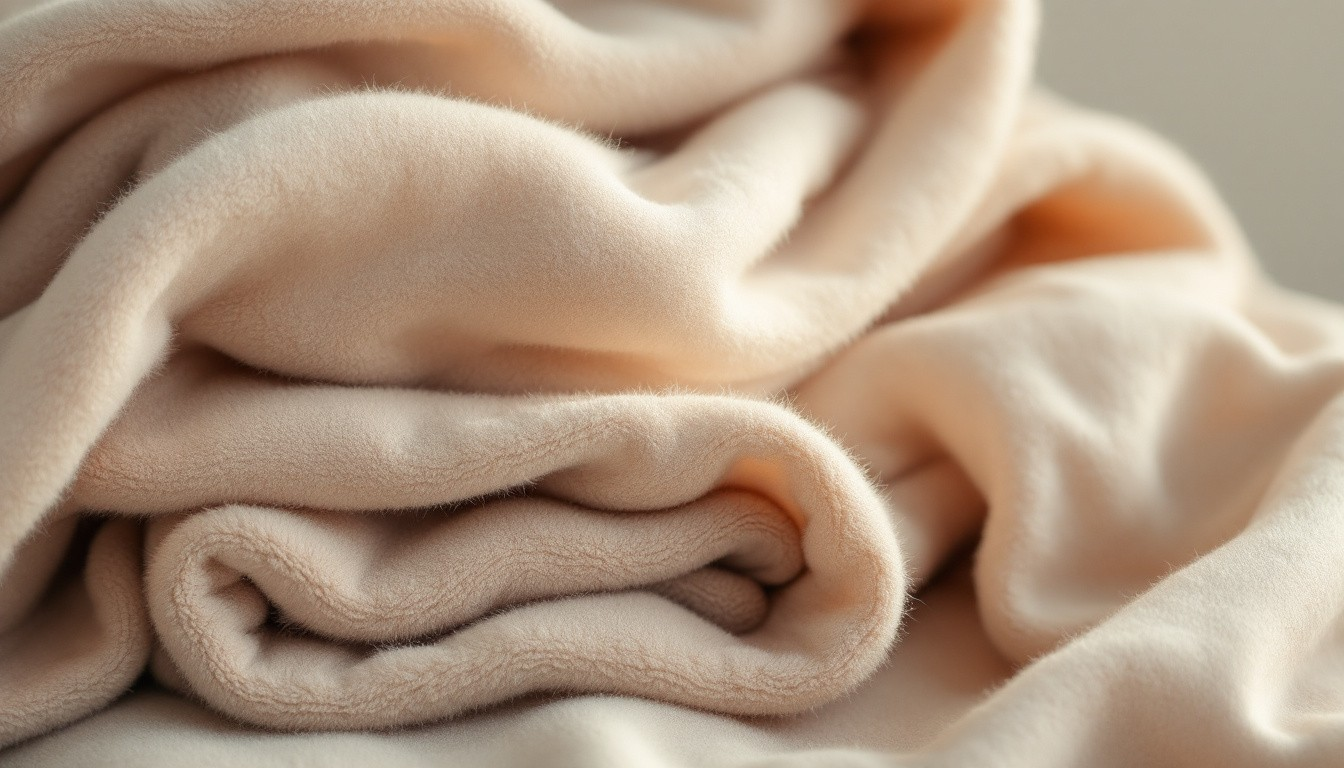
2. Fleece: Ultimate Warmth and Softness
When considering fleece for your hoodie, it’s crucial to understand the various types of fleece fabrics available, such as microfleece and polar fleece. Each type offers unique benefits, including superior insulation and softness, which enhance your comfort in colder conditions. This analysis will explore how these characteristics make fleece a top choice for warmth and coziness in your everyday wear.
2.1. Types of Fleece Fabrics
Fleece fabrics come in several types, each offering distinct characteristics that cater to various preferences and uses. You’ll find several fleece varieties, such as microfleece, which is lightweight and breathable, making it ideal for layering. Then there’s polar fleece, known for its thicker texture and excellent insulation properties, perfect for colder climates.
If you need durability and moisture-wicking capabilities, consider stretch fleece, which combines flexibility with warmth. Additionally, you might encounter recycled fleece, an eco-friendly option that retains softness while promoting sustainability. Each of these fleece characteristics plays an essential role in determining how the fabric performs, ensuring you can choose the perfect hoodie material tailored to your specific needs.
2.2. Benefits of Fleece Hoodies
Choosing the right fleece fabric for your hoodie not only affects its appearance but also its performance. Fleece benefits are substantial, primarily due to its exceptional warmth and softness. In a softness comparison, fleece outperforms many other materials, providing a cozy feel against your skin without sacrificing durability.
Moreover, fleece is lightweight, making it easy to layer without feeling bulky. Its moisture-wicking properties keep you dry, while the breathable nature allows for comfortable wear during physical activities. Fleece also resists pilling, ensuring that your hoodie maintains its smooth texture over time. With various fleece options available, you can tailor the weight and thickness to suit your climate, enhancing your overall comfort and satisfaction with your hoodie choice.
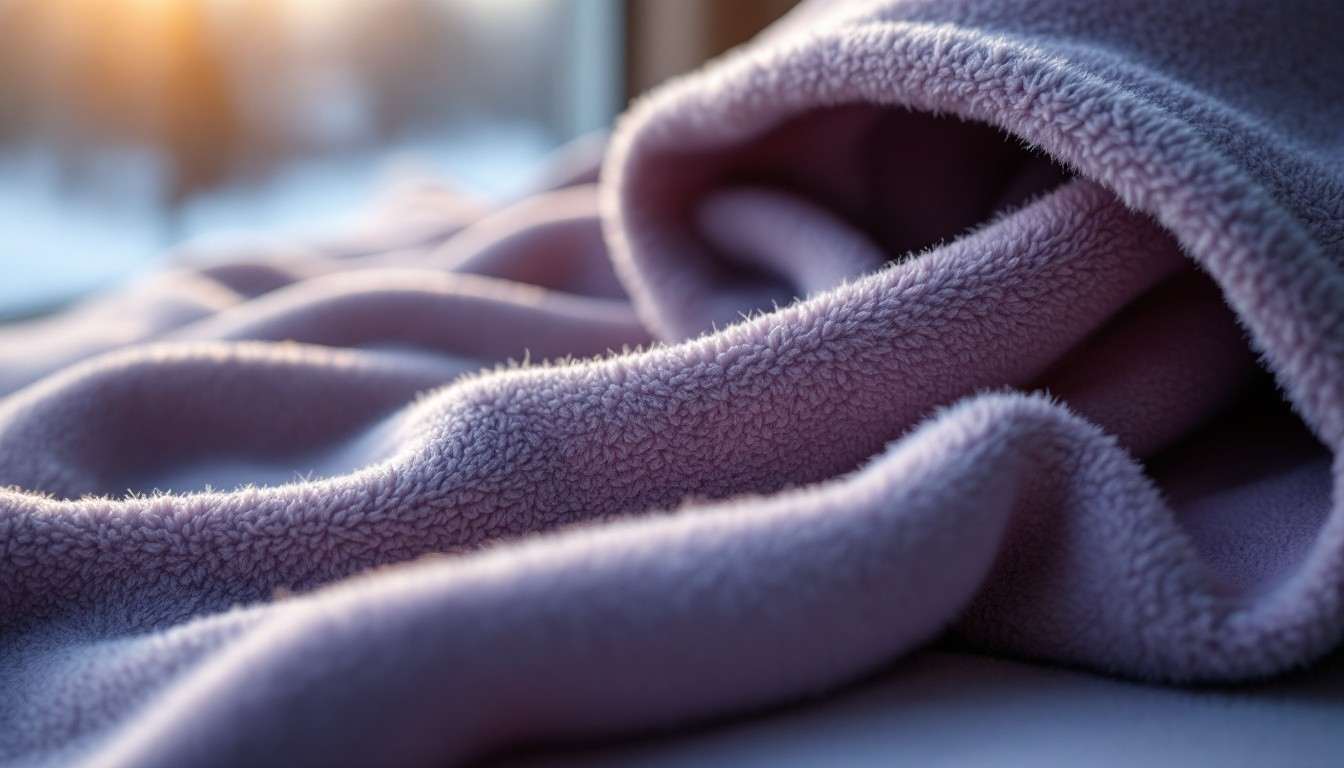
3. French Terry: The Perfect Blend of Comfort
French Terry combines cotton and polyester, providing a soft feel while maintaining durability and breathability. Its lightweight structure makes it ideal for layering without adding bulk, allowing you to adapt to varying temperatures effortlessly. Plus, the fabric’s versatility offers numerous style options, from casual to chic, making it a staple in any wardrobe.
3.1. Fabric Composition Benefits
When you’re on the hunt for the softest hoodie fabric, it’s essential to take into account the blend of materials that create the ultimate comfort. French terry, for instance, combines cotton and polyester, offering a balance of softness and fabric durability. The cotton provides a plush feel against your skin, while the polyester enhances the fabric’s strength and longevity. This blend guarantees that your hoodie withstands wear and tear without losing its cozy appeal. For maintenance, wash your hoodie in cold water and tumble dry on low to preserve its softness and shape. By choosing a thoughtfully composed fabric, you’re investing in both comfort and practicality, making sure your hoodie remains a staple in your wardrobe for years to come.
3.2. Ideal for Layering
Layering effectively can transform your outfit, and the right fabric makes all the difference. French Terry is an ideal choice for layering techniques due to its unique blend of softness and structure. This fabric features a looped texture on one side, providing warmth without excessive bulk, making it perfect for comfortable layering.
When you combine French Terry with other materials—like cotton or fleece—you achieve versatile fabric combinations that enhance breathability and insulation. This blend not only feels great against your skin but also allows for easy movement, essential for layering under jackets or over lighter tops. By selecting French Terry, you guarantee your layers work harmoniously together, creating a stylish yet functional look.
3.3. Versatile Style Options
The unique properties of French Terry not only enhance layering but also offer a range of versatile style options for any wardrobe. This fabric’s soft texture and breathability make it an ideal choice for adapting to various fashion trends and outfit combinations. You can easily dress it up or down, making it perfect for casual outings or relaxed office environments. Consider the following stylish options:
- Pair it with tailored trousers for a smart-casual look.
- Layer under a denim jacket for a chic weekend vibe.
- Combine with joggers for a cozy athleisure ensemble.
- Accessorize with statement jewelry to elevate your outfit.
- Wear it with a skirt for a playful contrast.
French Terry truly balances comfort with style, making it a staple for versatile fashion.
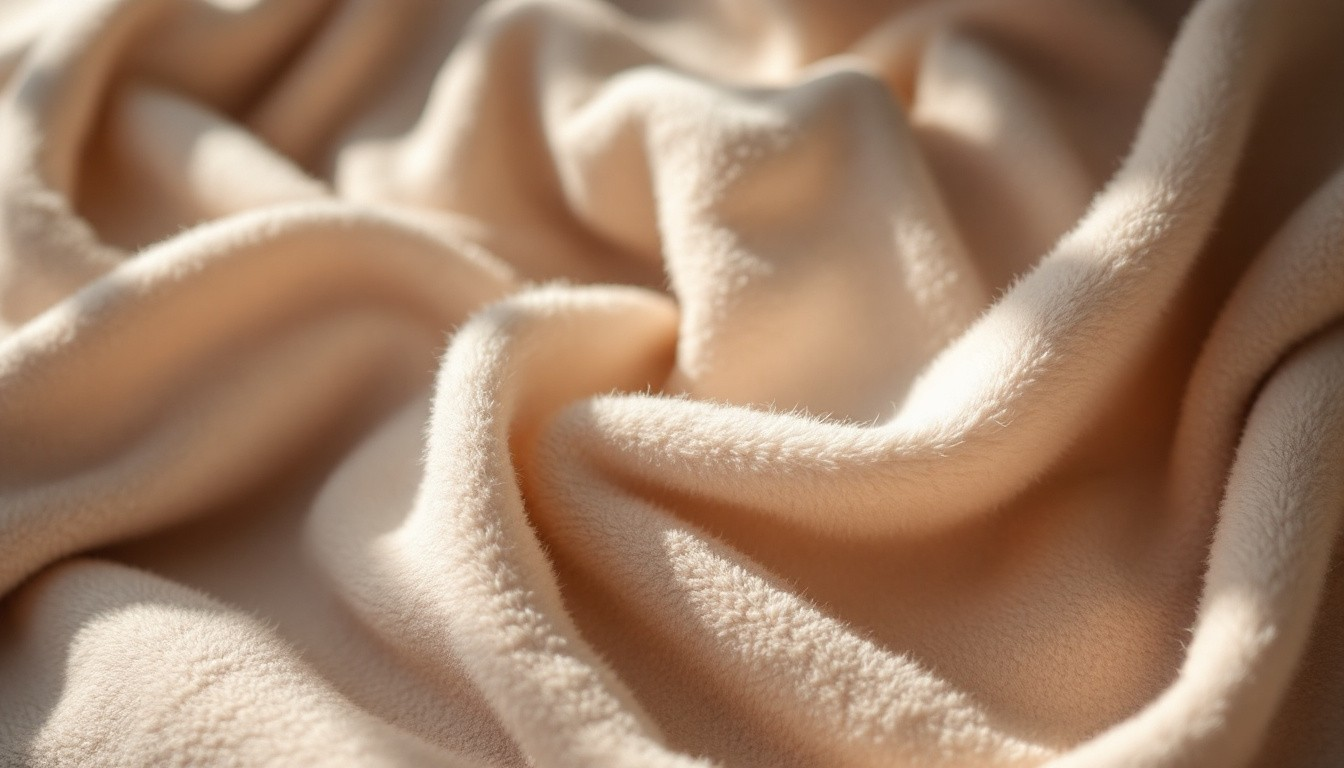
4. Bamboo: Eco-Friendly and Silky Smooth
Although many fabrics claim comfort, bamboo stands out as a premier choice for hoodies due to its unique blend of softness and sustainability. Bamboo softness is remarkable; the fibers are naturally smooth, creating a luxurious feel against your skin. This softness is attributed to the structure of bamboo fibers, which are finer than cotton and allow for a lightweight, breathable fabric.
Moreover, bamboo sustainability is an essential factor in its appeal. Bamboo grows rapidly, requires minimal water, and doesn’t need harmful pesticides, making it an eco-friendly option. When you choose a bamboo hoodie, you’re investing in a product that not only feels great but also aligns with environmentally responsible practices. This combination of comfort and ecological mindfulness makes bamboo an excellent choice for your wardrobe.
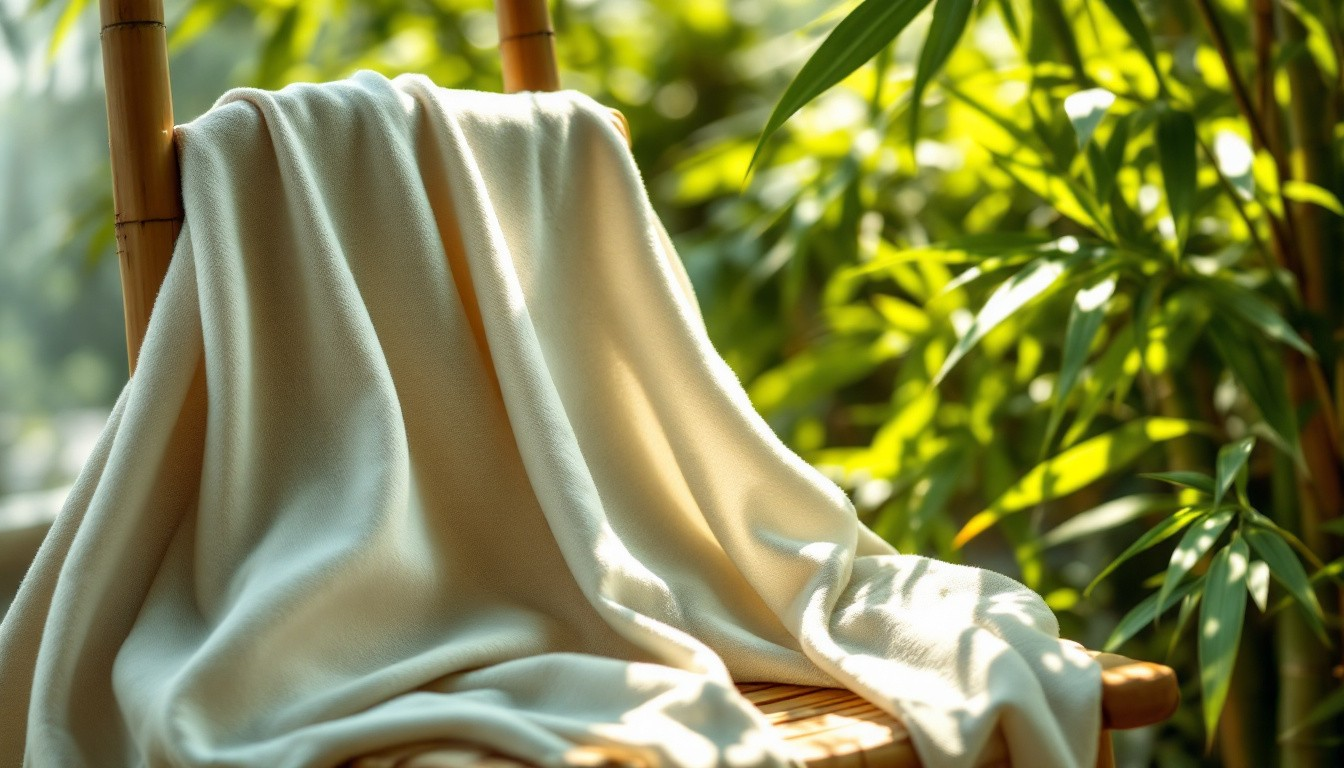
5. Polyester: Durable and Lightweight
Polyester stands out as a popular choice for hoodies, thanks to its durability and lightweight properties. You’ll appreciate the polyester benefits, which include:
- High tensile strength: Resists wear and tear, ensuring longevity.
- Moisture-wicking: Keeps you dry by pulling sweat away from your skin.
- Quick-drying: Ideal for active lifestyles, it dries faster than cotton.
- Color retention: Maintains vibrant colors, even after multiple washes.
- Cost-effectiveness: Generally more affordable than natural fibers while offering comparable comfort.
With lightweight durability, polyester not only withstands the rigors of everyday wear but also provides a comfortable fit. Therefore, when choosing a hoodie, considering polyester can lead to a satisfying blend of style, performance, and practicality.
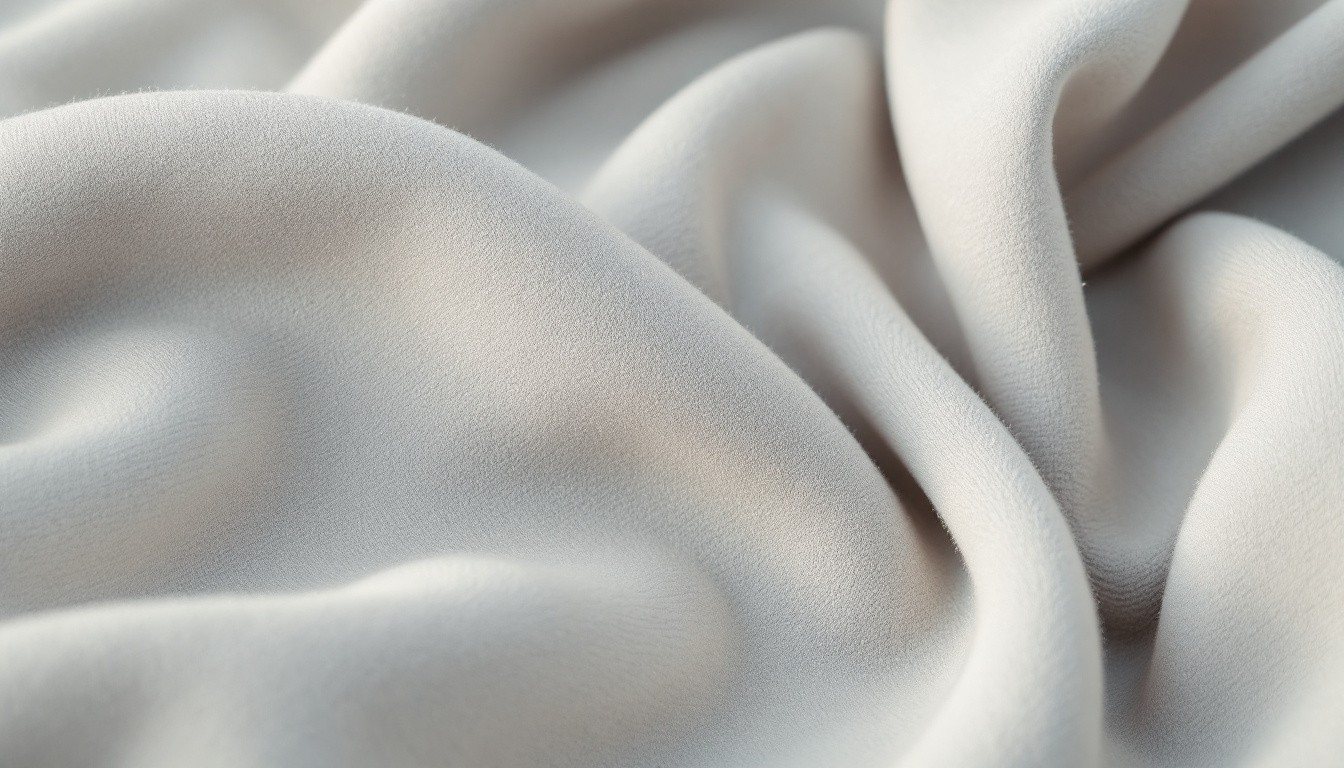
6. Cashmere: Luxury and Softness Combined
When you seek unparalleled softness and luxury in a hoodie, cashmere emerges as the premier choice. This fine fiber, derived from cashmere goats, boasts an incredibly soft texture and excellent thermal regulation, making it ideal for chilly days. Cashmere’s unique structure traps air, providing warmth without bulk.
However, its delicate nature requires careful handling; proper cashmere care includes hand-washing or dry-cleaning to maintain its integrity. You might consider cashmere alternatives like merino wool or cotton blends for a more budget-friendly option, but they often lack the same level of softness and luxurious feel. Ultimately, investing in a cashmere hoodie means indulging in comfort and sophistication, making it a worthwhile addition to your wardrobe.
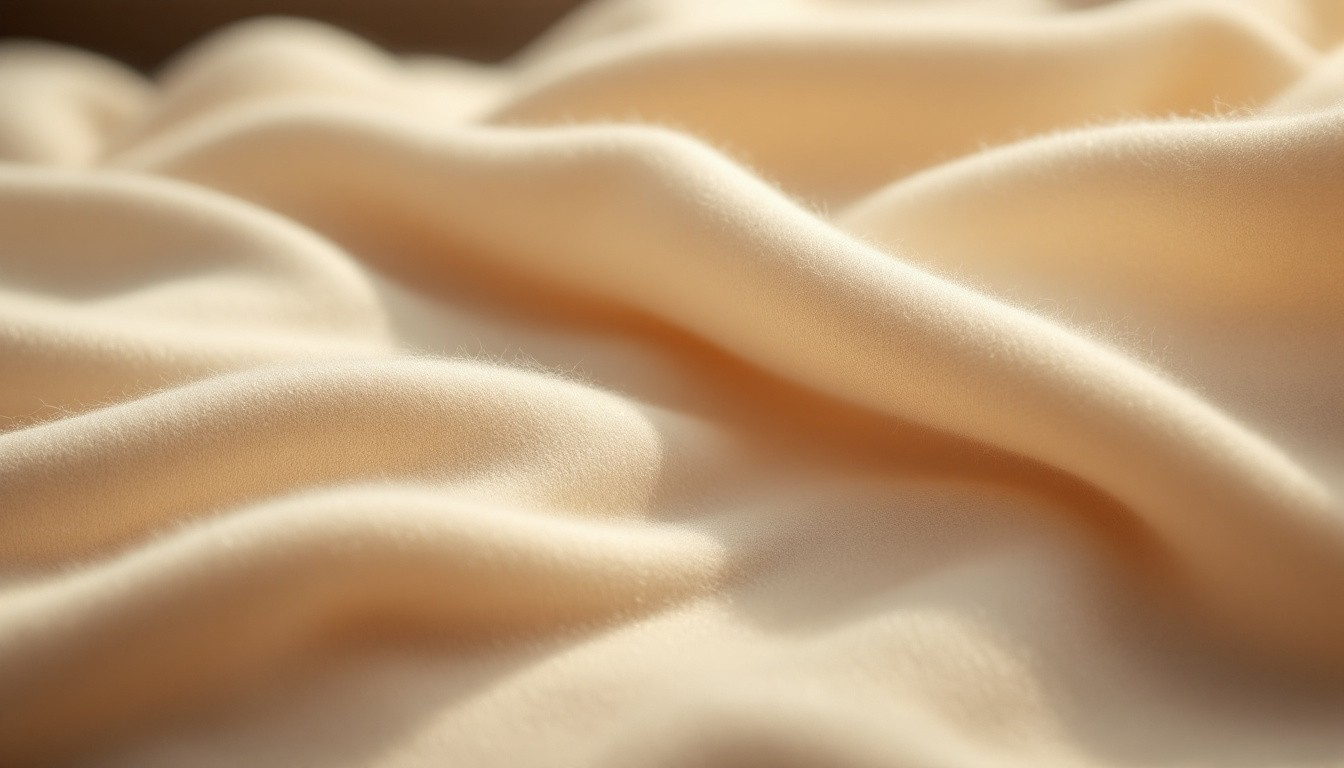
7. Modal: Breathable and Soft to the Touch
Modal, a semi-synthetic fiber derived from beech tree pulp, offers an exceptional combination of breathability and softness that elevates the hoodie experience. When you compare Modal vs. cotton, you’ll discover several Modal advantages that make it a superior choice for comfort-oriented apparel:
- Increased softness: Modal feels silkier against your skin.
- Enhanced breathability: It allows better airflow, keeping you cool.
- Moisture-wicking: Modal absorbs moisture efficiently, reducing dampness.
- Durability: Unlike cotton, Modal retains its shape and color over time.
- Eco-friendliness: The production process is more sustainable than conventional fibers.
Opting for a Modal hoodie guarantees you’re not just stylish but also enjoying advanced textile technology for an unparalleled wearing experience.
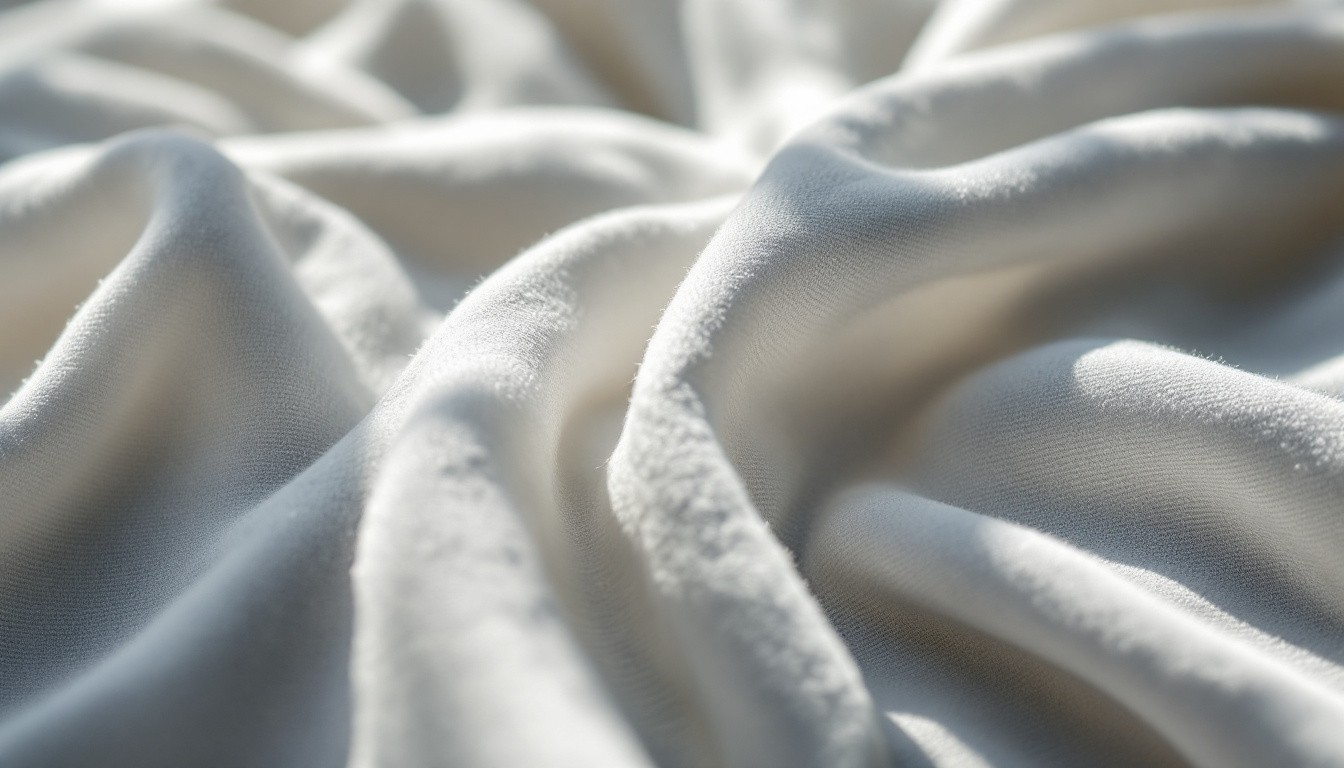
8. Sherpa: Plush and Cozy for Cold Weather
Sherpa fabric offers a luxurious texture that not only feels plush against your skin but also provides excellent insulation against the cold. When layering, its thickness and softness enhance comfort without sacrificing style, making it an ideal choice for chilly weather. Understanding these benefits can help you appreciate why Sherpa is a popular material for cozy hoodies.
8.1. Luxurious Texture Benefits
Comfort and warmth are essential when braving cold weather, and the luxurious texture of Sherpa fabric delivers both in abundance. This plush material stands out in texture comparison against other luxury fabrics, offering unique benefits that enhance your hoodie experience.
- Insulation: Sherpa’s thick fibers trap heat effectively, keeping you warm.
- Softness: The velvety surface feels gentle against your skin.
- Durability: Sherpa resists wear and tear, maintaining its luxurious appeal.
- Breathability: Despite its warmth, Sherpa allows airflow, preventing overheating.
- Versatility: It complements various styles, making it ideal for casual and upscale settings.
Choosing Sherpa hoodies guarantees you enjoy a blend of sophistication and functionality, perfect for cold-weather wear.
8.2. Ideal for Layering
Layering is a practical approach to staying warm, and Sherpa hoodies excel in this regard thanks to their plush and cozy nature. The lightweight layering capability of Sherpa fabric allows you to add warmth without bulk, making it ideal for shifting seasons. Its insulating properties trap heat while remaining breathable, ensuring comfort whether you’re indoors or outdoors. This seasonal versatility means you can easily pair a Sherpa hoodie with a long-sleeve shirt or under a heavier coat for colder days. Additionally, the softness against your skin enhances your overall layering experience. Choose Sherpa when you need a dependable, stylish option that meets both functional and aesthetic needs in your wardrobe.

9. Terry Cloth: Absorbent and Soft
Terry cloth stands out as a prime choice for hoodies due to its unique blend of absorbency and softness. This fabric’s looped design not only provides a plush feel but also enhances its moisture-wicking capabilities, making it ideal for various terry cloth applications. When you choose terry cloth for your hoodie, you’re investing in a material that’s comfortable yet functional.
Consider the following aspects:
- Excellent moisture absorption
- Soft texture against the skin
- Durability for everyday wear
- Versatile for both casual and athletic settings
- Easy terry cloth care instructions, often machine washable
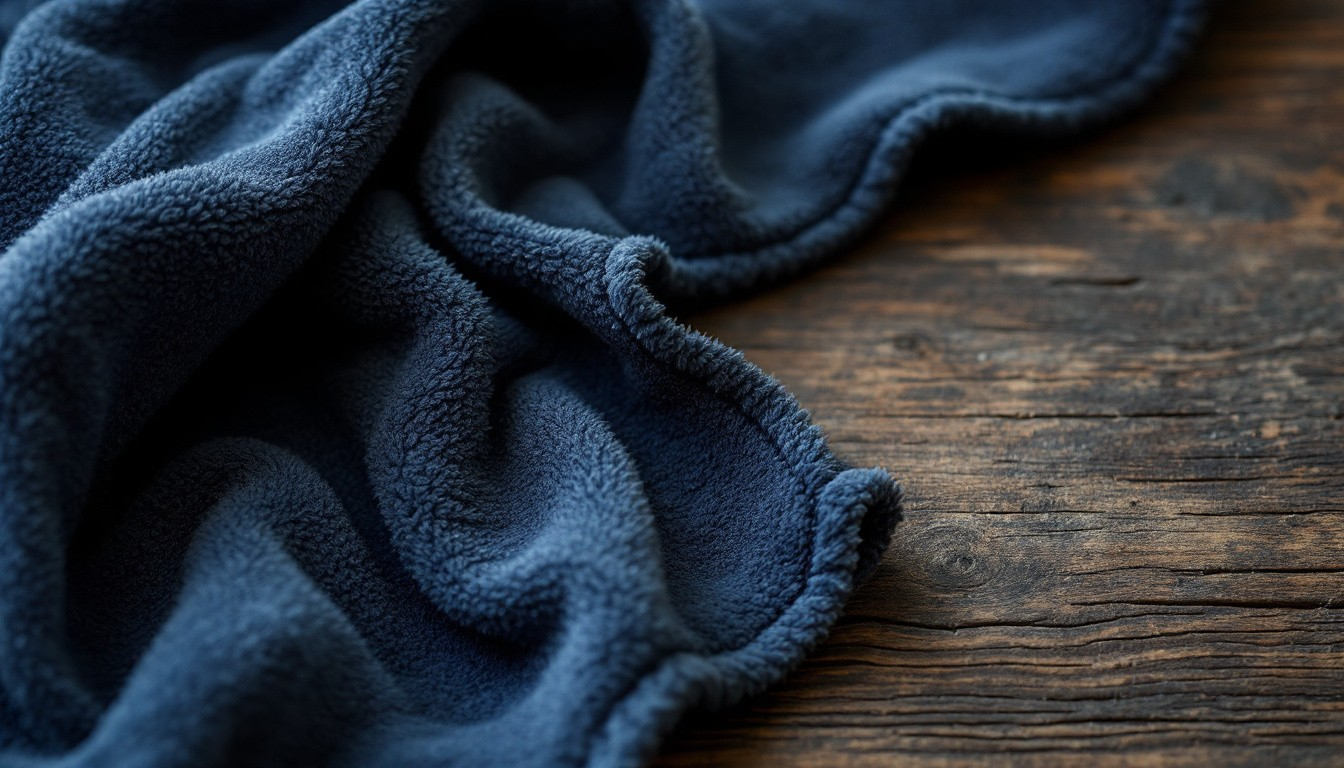
10. Blended Fabrics: The Best of Both Worlds
When considering hoodie materials, blended fabrics emerge as a compelling option, marrying the strengths of various textiles to enhance overall performance. These fabrics offer blended benefits like improved durability, softness, and moisture-wicking properties, making them highly versatile for different occasions.
|
Fabric Type |
Key Features |
Ideal Use |
|
Cotton-Poly |
Soft, breathable, durable |
Casual wear |
|
Fleece-Cotton |
Warmth, lightweight |
Cold weather |
|
Tri-blend |
Soft, stretchy, breathable |
Everyday comfort |
|
Rayon-Poly |
Smooth, drapes well |
Stylish outings |
|
Hemp-Cotton |
Eco-friendly, strong |
Sustainable fashion |
Frequently Asked Questions
1. How Do I Properly Care for Soft Hoodie Materials?
Think of your favorite cozy blanket. To care for soft hoodie materials, use gentle fabric care techniques. Wash in cold water, avoid harsh detergents, and air dry to maintain softness and longevity.
2. Are There Any Hypoallergenic Hoodie Materials Available?
Yes, there are hypoallergenic fabrics suitable for hoodies, such as organic cotton and bamboo. These materials minimize irritation for sensitive skin, ensuring comfort while reducing the risk of allergic reactions. Always check labels for hypoallergenic certifications.
3. What Is the Best Softness-To-Durability Ratio for Hoodies?
When evaluating the best softness-to-durability ratio for hoodies, consider softness ratings alongside durability factors. Blends like cotton polyester often provide ideal balance, ensuring comfort while maintaining resistance to wear and tear over time.
4. Can I Find Soft Hoodies in Plus Sizes?
Yes, You’ll discover plenty of cozy plus-size hoodies crafted from soft, breathable fabrics. Look for comfortable fits that don’t compromise style. Brands increasingly cater to diverse sizes, ensuring you can enjoy both softness and a perfect fit.
5. How Do Different Materials Affect Hoodie Pricing?
Different fabric types greatly influence hoodie pricing factors. Premium materials like cashmere or organic cotton drive costs higher due to their quality and durability, while cheaper blends might lower the price but compromise comfort and longevity.
Wrapping It Up
When it comes to what is the softest material for hoodies, you can’t settle for anything less than the cloud-like embrace of a cotton-polyester blend. Imagine wrapping yourself in a warm hug that lasts all day! While options like bamboo and modal offer silky textures, nothing beats the combination of durability and comfort. Whether you choose fleece for warmth or French terry for versatility, you’re guaranteed an experience that feels like pure luxury against your skin. Go ahead, indulge!


